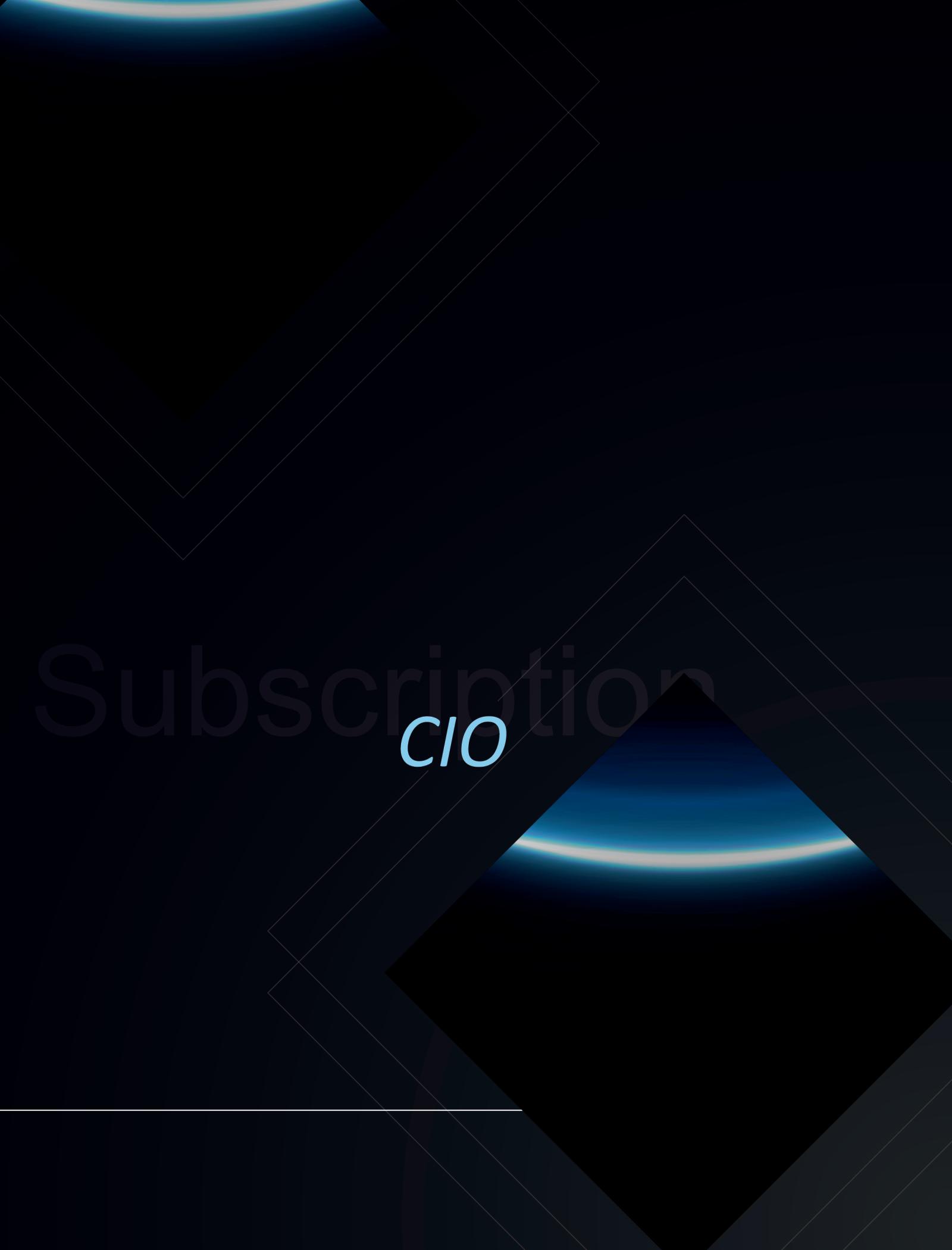

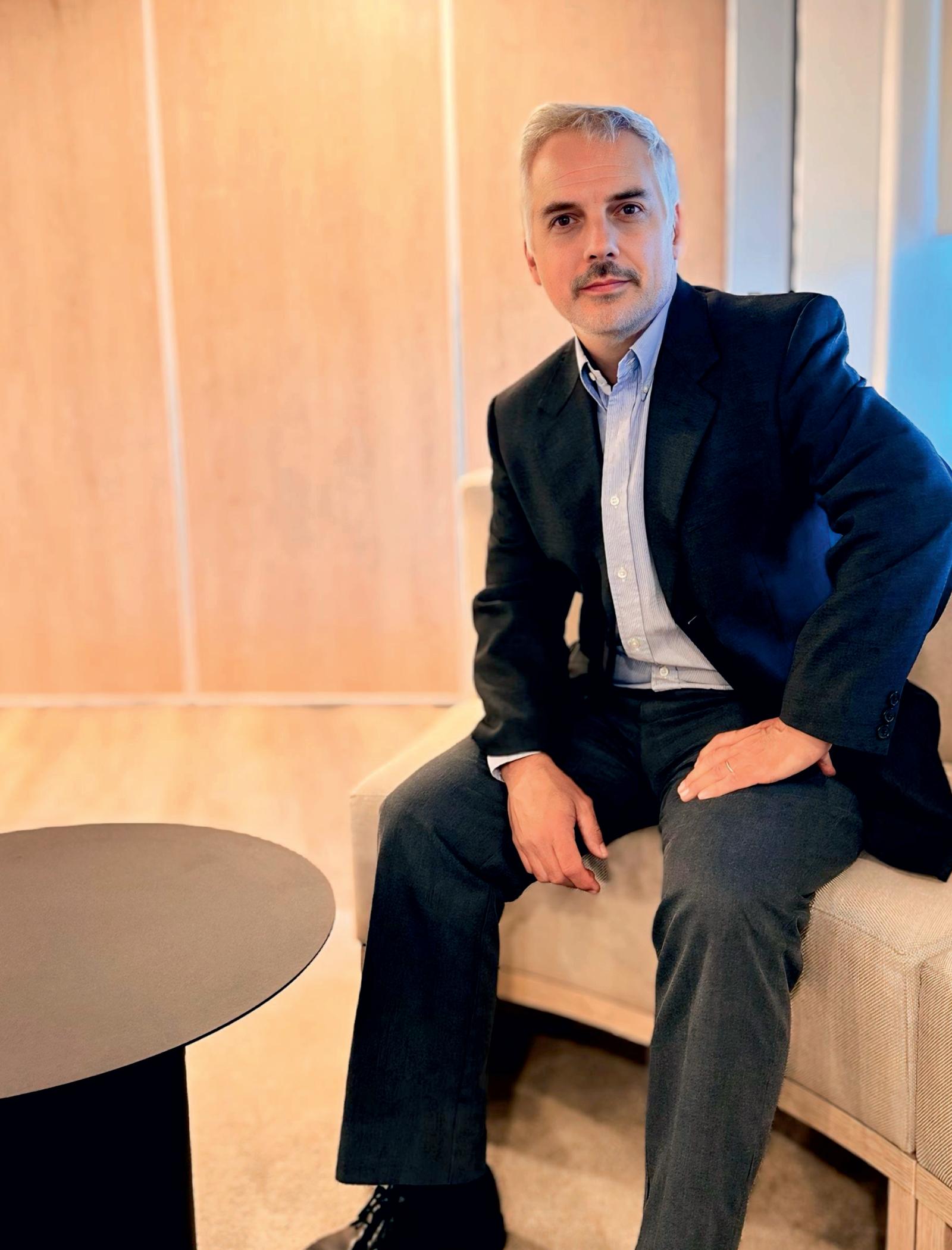
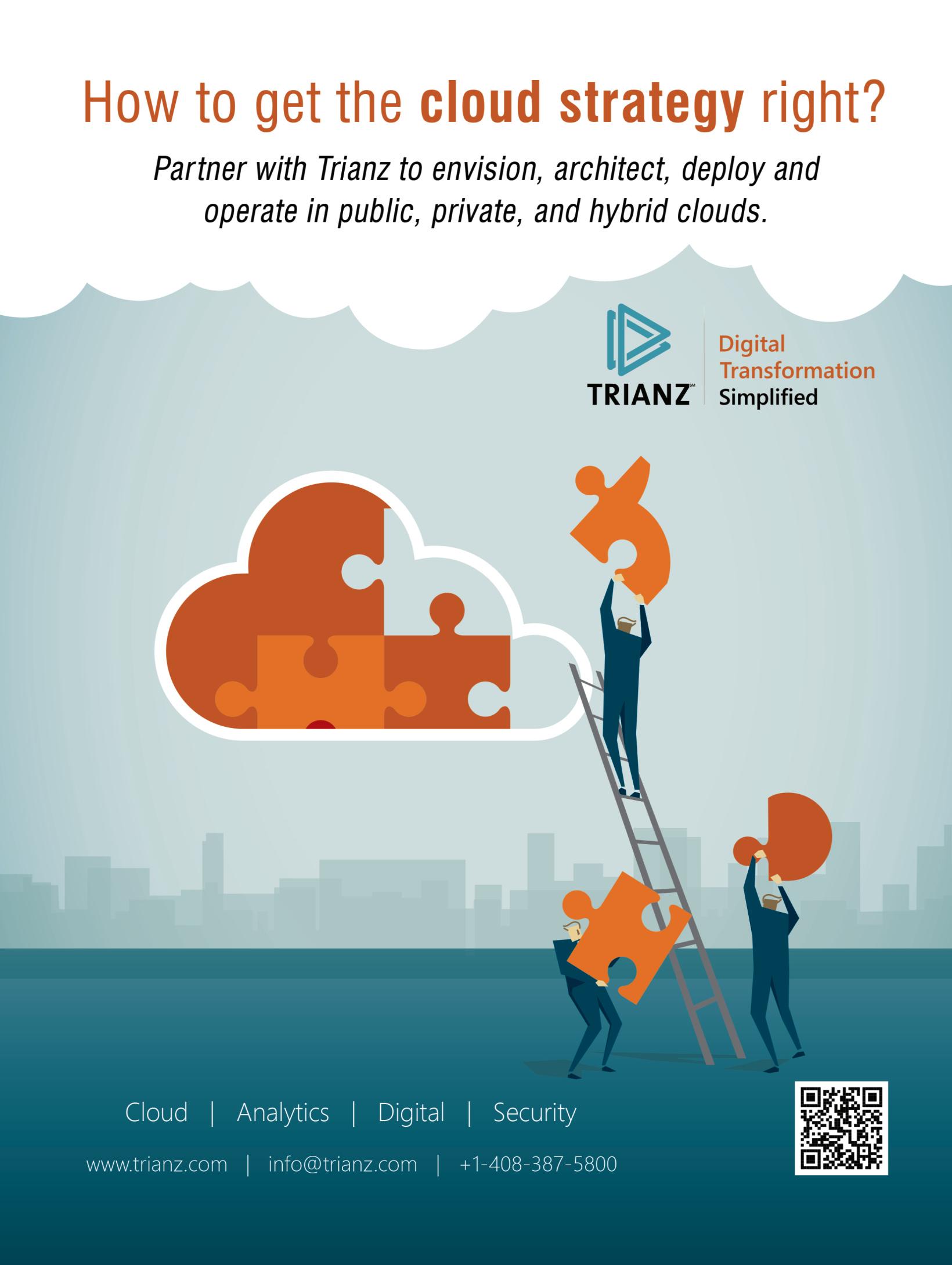





















Behindeverygreatdigitaltransformation,thereisaleaderwhodarestoreimagine
what’spossible.InArgentina,anewgenerationofChiefInformationOfficersis leadingthecharge—notjustindrivingtechnologyadoption,butinreshapingthe futureofentireindustries.
Thisedition, Argentina’s Most Influential CIOs to Follow in 2025,isdedicatedtothose visionaryindividualswhoareredefiningtheroleofthemodernCIO.Nolongerlimitedto overseeingITinfrastructure,today'sCIOsarestrategicarchitectsofinnovation,resilience, andgrowth.Theybridgethegapbetweentechnologyandbusiness,aligningdigital strategieswithreal-worldimpact.
Fromfinanceandagriculturetoenergy,healthcare,andmanufacturing,ArgentineCIOs aremakingboldmoves—modernizinglegacysystems,championingdata-drivencultures, anddrivingcybersecurityreadiness,allwhilenavigatingeconomicvolatilityandglobal disruption.Theirleadershipgoesbeyondtheboardroom.It’svisibleinagileteams, automatedoperations,AIintegration,andthesuccessfulrolloutofcloud,ERP,anddigital transformationprograms.
WhattrulydistinguishestheseCIOsisnotjusttechnicalexpertise,buttheabilitytolead change—withvision,empathy,andrelentlessfocus.Theyunderstandthattechnologyis notthegoal,butacatalyst—anenablerofmoreintelligentdecisions,moreagile responses,andmoreinclusiveopportunities.
ThisfeatureservesasatributetothoseattheforefrontofArgentina’sdigitaljourney.It recognizesCIOswhoinspireconfidenceinuncertaintimes,setbenchmarksininnovation, andbringahuman-centeredapproachtotechnologicaladvancement.
Theirinfluenceismeasurednotonlybythesystemstheydeploy,butbythevaluethey create—fortheirorganizations,theirindustries,andthecommunitiestheytouch.These aretheCIOsshapingthenarrativeofamoreconnected,adaptive,andforward-thinking Argentina.
Asyoureadthroughtheirstories,achievements,andleadershipphilosophies,one messagestandsclear:thefutureofArgentina’sdigitaleconomyisincapable,visionary hands.
Thiseditionisdedicatedtothem—withrespect,recognition,andanticipationforwhat they’llachievenext.
CIO



Emilio Ignacio Feliu A Quiet Spark where Passion Met Purpose
08
The Ripple Effect: How Great Leaders Shape Culture and Change Command and Clarity: Mastering the Flow of Information in Organizations
18





Editor-in-Chief
Deputy Editor
Managing Editor
Assistant Editor
Visualizer
Art & Design Head
Art & Design Assitant
Business Development Manager
Business Development Executives
Technical Head
Assitant Technical Head
Digital Marketing Manager
Research Analyst
Circulation Manager
David
Mia
Eric
Richard
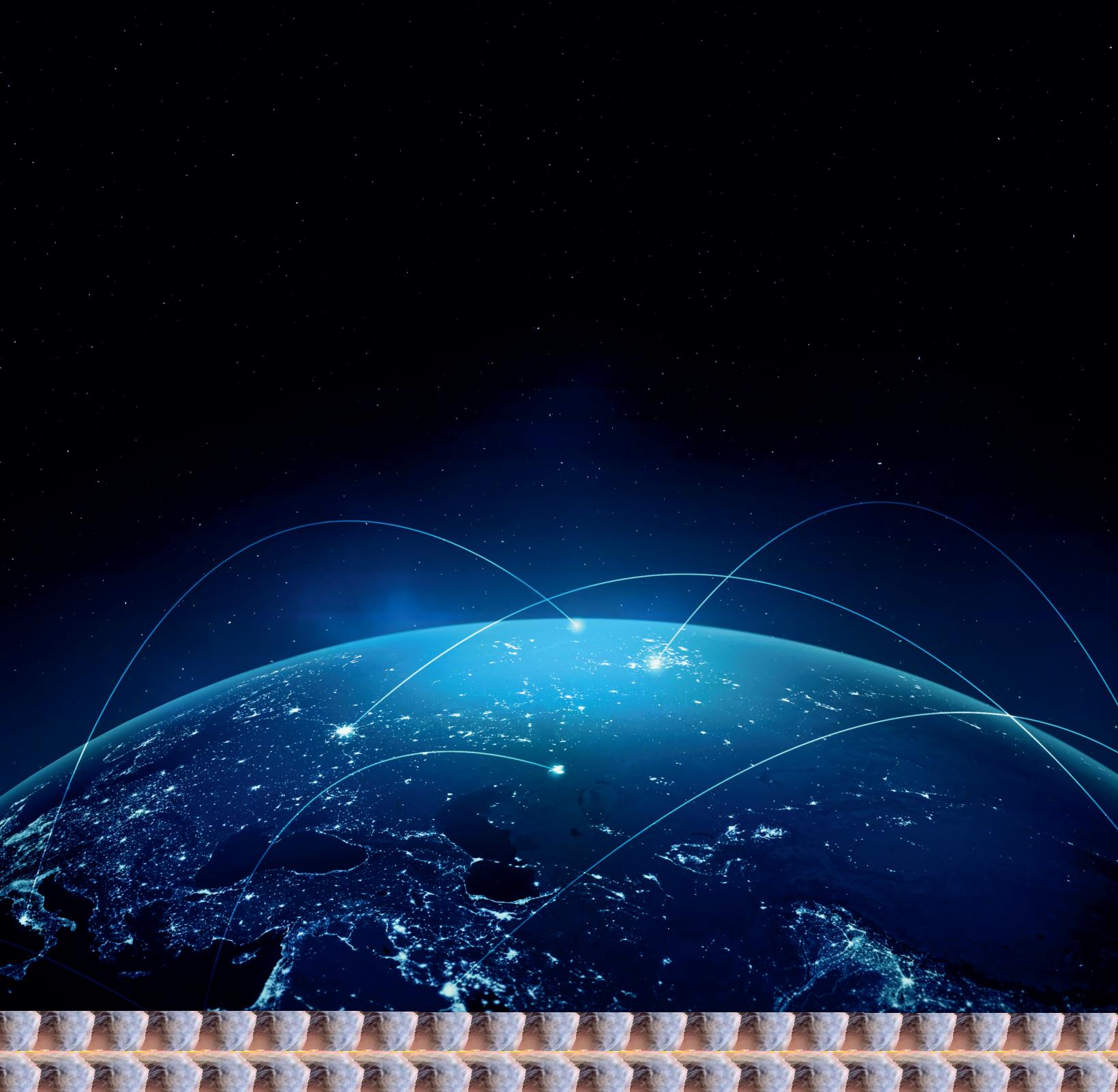





Emilio Feliu CIO
Federico Guerrini
Head
of Digital Opera�ons
German Gimenez
Chief Execu�ve Officer
Juan Testón
Chief Execu�ve Officer
Mariano Césare Blunck
Chief Innova�on & Strategy Officer
Company Name
Bruchou & Funes de Rioja bruchoufunes.com
Baliarda S.A baliarda.com.ar
NAPSIX napsix.com
Garfin Agro S.A. garfinagro.com Worldsys worldsys.com
With extensive experience in IT leadership, legal tech, and cybersecurity, Emilio plays a pivotal role in aligning technological innova�on with the firm’s business objec�ves and client service excellence.
Federico Guerrini is a key figure at Baliarda S.A., a leading Argen�ne pharmaceu�cal company, where he plays an instrumental role in advancing technological innova�on and opera�onal excellence.
With a strong entrepreneurial background and deep exper�se in technology and real estate, Germán leads NAPSIX’s mission to make property transac�ons more transparent, data-driven, and accessible for all.
Under his leadership, Garfin Agro S.A. has expanded its opera�onal footprint and adopted technology-driven solu�ons that improve crop yield, ensure quality standards, and support environmentally responsible farming.
Mariano Césare Blunck serves as the Chief Innova�on & Strategy Officer at Worldsys, a prominent La�n American firm specializing in compliance, an�-money laundering (AML), and financial crime preven�on solu�ons.

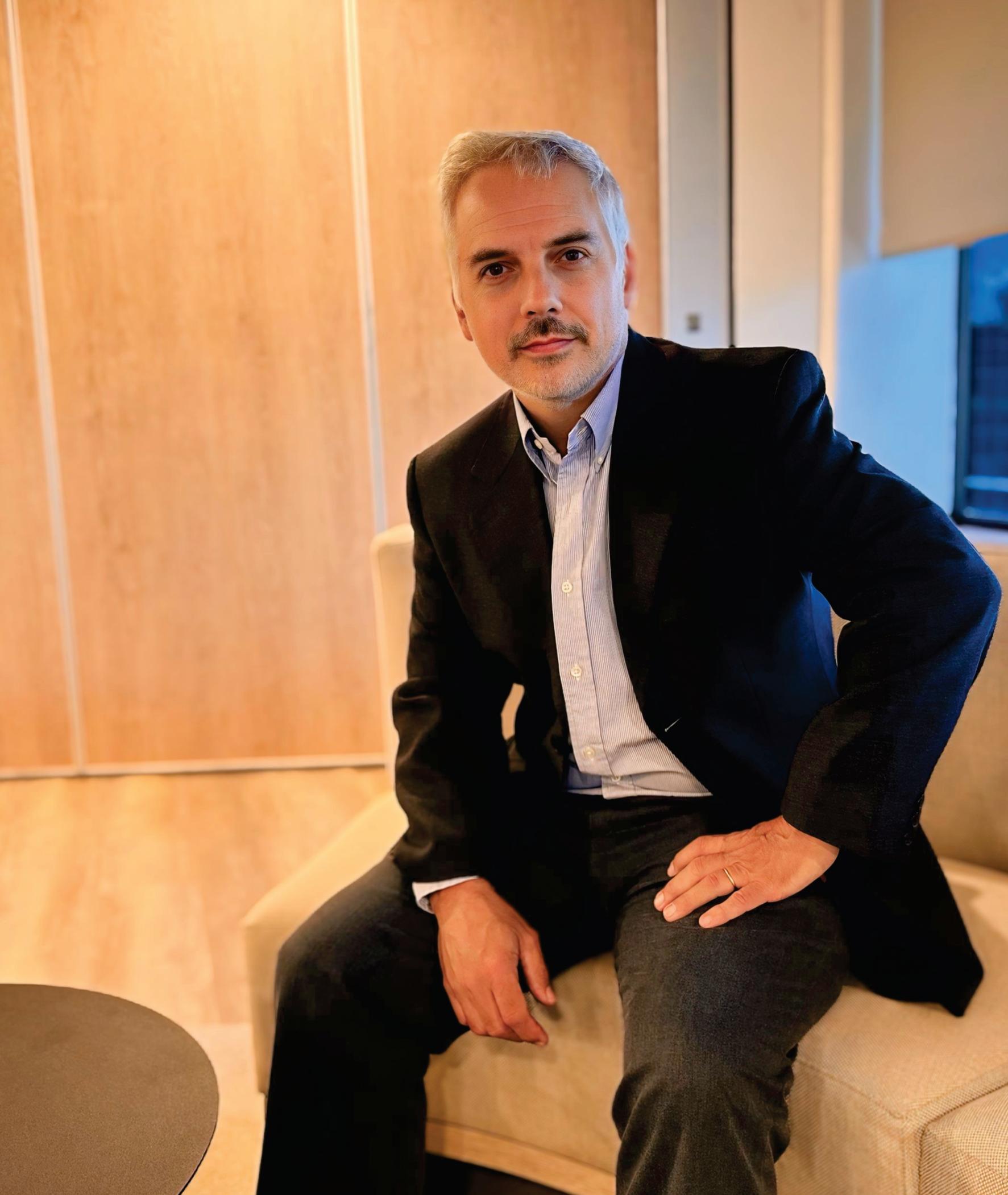

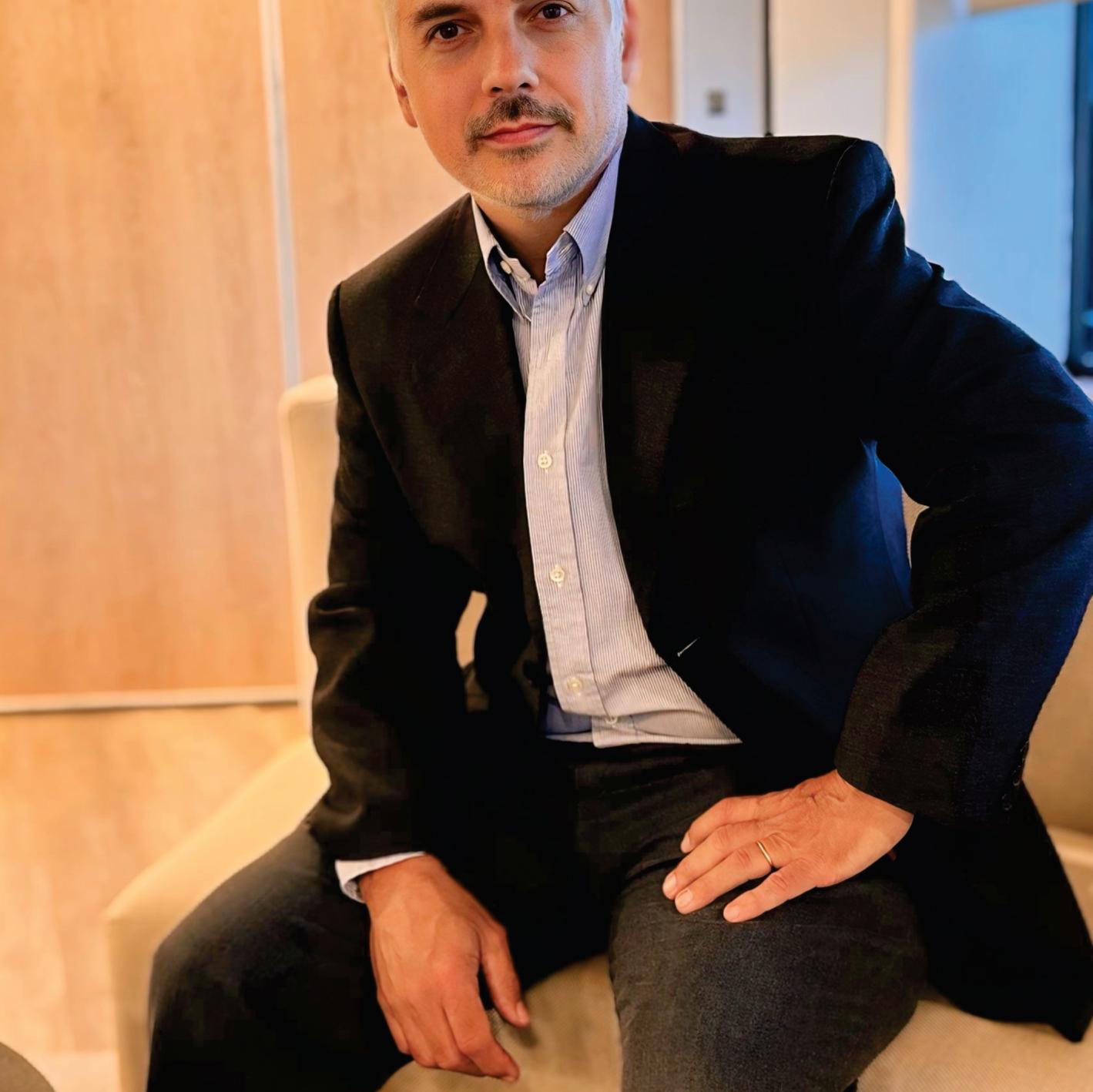



Curiosity often begins quietly—with a question, a spark,asensethatthere’smorebeneaththesurface. For Emilio Ignacio Feliu, it was technology that stirredthatsenseearlyon.Hewasn’tchasingtitlesormapping outafutureinIT Hewassimplydrawntosystems,tologic,to thechallengeofunderstandinghowdigitalframeworksheld themodernworldtogether
That quiet fascination soon turned into something more deliberate. This exploration would shape not only his professional path but also his perspective on innovation, leadership,andtheroleoftechnologyintransformingentire industries. For Emilio, technology was not just an area of interest;itallstartedasahobby Inhischildhood,hewasinto aeromodelling and rocketry courses until the appearance of thefirstpersonalcomputersand,ofcourse,thegames.
Then,intheearly90s,heentereduniversitytostudySystems Engineering. While studying, Emilio began taking his first steps in IT and along with some classmates, he started working on the installation of the first microcomputer networks (LAN). From there, he started working in an industrialcompanyastechnicalsupportformicrocomputers.
Although at that time the market was dominated by large systemslikeIBM'sAS400,PCswerebeginningtoappearas work tools.After a while, he changed companies, positions, and industries, moving from working in an industrial environment with engineers to working as a Network Administratorinalawfirmwithlawyers.
Here,hegrewprofessionallyandreachedtheITmanagement position.Duringtheyearsheworkedatthisfirm,helearned about the legal business. Gradually, he immersed himself in whatisnowknownasLegaltech.

After a few years independently advising law firms in Argentina and abroad, Emilio joined Bruchou & Funes de Rioja in July 2016, where he joined an important 'digital reengineering' project. That move wasn’t just a job change
—itwasastrategicpivotthatwouldplaceEmilioatthehelm ofoneofthemostambitiousdigitaltransformationprojectsin theregion.Itwasinthedevelopmentphase,andEmiliogotan opportunity to lead the technology part with a new modern approachandprimarilywithastrategicvision.
InhiscurrentroleastheCIOofthecompany,hisprimaryrole istodefine,develop,anddirectthefirm'sITstrategy,ensuring that it is aligned with the firm's objectives. It extends to the evaluation and adoption of new technologies with a view to improving the organization’s efficiency He also manages theITbudget,focusingonoptimizingthecostandvalueof technologyinvestments.
Togetherwithhisteamleaders,Emilioestablishesand maintains the policies and procedures that regulate theuseofinformationtechnologieswithinthefirm. He manages relationships with various technology providers, fostering long-lasting, trust-based relationships and creating an ecosystem of 'technology partners' to ensure quality services at reasonable costs. He is also responsible for managing the various teams that make up the IT department,suchasInfrastructureandOperations, Project Management, Development, Information Security,andtheHelpDesk.
ToensurethattheStrategicITPlanisalignedwith the firm's business objectives, Emilio relies fundamentally on fluid and direct communication with the firm's management bodies: the Board and theExecutiveDirectors,andwiththepartnersofthe variouspracticeareasthatmakeupthefirm.Through regular formal and informal meetings, he exchanges ideas and discusses needs and opportunities in an increasingly dynamic and technology-dependent market.

“Emilio always tries to understand and correctly de�ne the problem and the need before proposing a response.”








“To ensure that the Strategic IT Plan is aligned with the firm's business objectives, Emilio relies fundamentally on fluid and direct communication with the firm's management bodies: the Board and the Executive Directors, and with the partners of the various practice areas that make up the firm.”


Heexpresses,“The years of experience in the legal field and the knowledge of the business become relevant, allowing me to understand their concerns and requirements, being able to speak in the same 'legal' terms they are accustomed to, and thus offer them technological solutions that are applicable andusefulforthebusiness.”
Emilio tends to believe that it should be easier to adopt a cultureofinnovationandcollaborationintheITsectorthanin many other industries. By nature, people working in IT, regardless of their area of expertise, are fundamentally curious and open to experimentation, innovative, and accustomedtoworkinginteams.
Likewise,astheCIO,Emilioalwaystakestheresponsibility of enhancing these aptitudes, encouraging individual creativity, motivating the team to propose new ideas, and seeking solutions in any technology This is achieved by establishing and communicating a clear vision of what is wanted and required, and how innovation and collaboration contribute to achieving the objectives and, therefore, the successofthedepartment.Theseachievementsininnovation


must be recognized, both formally, such as a performance evaluation,andpubliclytoincentivizethroughexample.
He believes that it is very important to support continuous learning and training, investing in the professional development of the ITteam.This increases individual skills andalsoallowsothermemberstogrowthroughtheexchange ofknowledgeandexperiences.
He comprehends the importance of being willing, demonstrating an open attitude towards change, and being receptive to new ideas that collaborators may bring. This is achieved by establishing very fluid and transparent communicationwiththeteam,wheretheimportanceoftheir opinionsisconveyed,continuousimprovementisencouraged, and creativity in problem-solving or requirements is promoted.
Emiliobelievesthatthefundamentalgoalofachievingbetter collaboration in the department is to foster that 'esprit de corps'withintheteam,motivatingthemtofeellikepartofa whole, where the IT department is more than the sum of its members.
“Emilio always takes the responsibility of enhancing these aptitudes, encouraging individual creativity, motivating the team to propose new ideas, and seeking solutions in any technology.”


“Emilio establishes and maintains the policies and procedures that regulate the use of information technologies within the �rm.”
Additionally,thefirmpromotesacultureofrespectingoffice hours whenever possible. However, IT work often requires broad availability, and this is where it is essential to have a familythatunderstandsandsupportsthiscircumstance.
On theotherhand,hehas averyintensefamilyroutinewith school-aged children, whom he accompanies as much as possibleintheircurricularandsportsactivities,whichforces himtodisconnectfromtheoffice.Twotothreetimesayear,he embarks on multi-day mountain trekking expeditions, fully disconnectingfromtheoutsideworldandimmersinghimself incompletesolitude.
Emilio always tries to understand and correctly define the problemandtheneedbeforeproposingaresponse.Whilethis may seem basic, it is very common in this field for users to propose 'solutions' instead of conveying a concrete 'requirement.'
This is even more common when there is a situation of urgencyorrush.Itiscommontohearphraseslike:'Ineedyou toimplementthisorthat,'or'developthisapplicationorreport urgently.'Thisiswhenitbecomesimperativetotaketwomore minutes and thoroughly assess the need. Because solutions canoftenbemuchsimplerthaninitiallythought.
Assomeonewhosethoughtslineuplikewell-laidtracks,he approacheseachdaywithstructuredprecision—meticulously organizing and planning tasks to maximize productivity during office hours. He also ensures effective delegation, empoweringhisteamtomeetalldemandsefficiently.
Letting the scenario bloom further, Emilio emphasizes his approachtonavigatingthechallengeshehasfacedsofar He shares,forexample,radicalinfrastructurechanges,especially when adopting a new and sometimes innovative technology withaviewtolong-termdevelopment.Thisisevenmoreso when one is 'comfortable' with a platform and maintains a highlevelofservicewithit,butstilldecidestomovetowards

something completely new, considering the firm's future strategy.
The 2020 pandemic was another great challenge, as remote workwasnotacommonpracticeinthelegalfieldatthattime. And although there was great confidence in the systems, a scenario where the entire firm had to operate remotely for a long time had never been considered. Thanks to the investmentsthathadbeenmadeinsystemsandtechnologies, coupled with proper planning, the firm was able to operate perfectly well throughout the 'isolation' period without sufferinganyimpactonthequalityofitsservices.
ItshouldbenotedthatinArgentina,inadditiontotheinherent complexity of technological challenges, there is the added complexity of the country itself. Years of uncertainty and economic fluctuations, changes in regulations and rules, limitationsontheimportationofequipment,obstaclesinthe

managementorrenewaloflicensesorsubscriptions,etc.This makes everything more difficult and laborious, with a high levelofrisk.
Emilio stays informed by actively participating in industry talks, events, and technology presentations held throughout the year. Even when certain topics may not appear directly relevant to the business at first glance, they often provide valuable insights into emerging trends He also attends presentationsfromvarioustechnologycompaniestoexplore theirlatestproductsandservices.
Additionally, he keeps up with developments by reading reports and specialized papers—particularly on topics he findshighlyrelevant,suchasartificialintelligence.Toalesser extent,healsofollowskeythoughtleadersonsocialmediato stayconnectedwiththebroaderconversation.
ThisapproachreflectsEmilio’snaturalcuriosityandforwardthinking mindset—always looking for connections others might overlook and leveraging that knowledge to inform strategicdecisions.Stayingupdatedisn’tjustaboutabsorbing information for him, it’s about anticipating change and positioningthebusinesstolead,notfollow.
TheReflectedGloryofExcellence
Emiliotakesprideinhavingplayedakeyroleinpositioning the firm as a market leader through the strategic use of technology. Under his leadership, the firm has earned widespread recognition for its innovation, technological sophistication, and effective application of cutting-edge solutionsenhancingclientserviceanddataprotection.

He expresses, “I also feel personal pride when I see the growth of the people who work or have worked with me, both at Bruchou & Funes de Rioja and in other organizations where I have worked. I firmly believe that the growth of the staff in charge is a fundamental contribution to the organizationandanobligationofateamleader,andfostering this development and seeing it reflected in the reality of the peopleisalwaysasatisfaction.”
WordsofWisdom
AsapieceofadvicefortheaspiringCIOswho aim to lead and drive technological




transformationwithintheirorganizations,Emilionotes,“It is essential to possess a deep understanding of the business context in which one operates in order to identify where and how technology can deliver meaningful value effectively Equally important is maintaining awareness of emerging trends and innovations, coupled with a mindset open to creative thinking This approach enables the strategic application of new technologies to drive impactful digital transformationacrosstheorganization.”

WhileEmiliocloselyobserveswhatliesahead,heunderlines that“We are facing a challenge and at the same time a great opportunity to give technology a strategic role in legal firms. The emergence of artificial intelligence (AI) in the legal field is already a fact, and those firms that do not adapt to the change this entails will be left out of the market, unable to compete with firms of the same technical-legal level that have optimizedandstreamlinedtheirprocesseswithAI.”
ItlaysthefoundationforBruchou&FunesdeRiojatoadopt AIsolutionstoenhancethefirm'sperformance.Thecompany has an agreement with a prestigious AI laboratory from a renownededucationalinstitutioninthecountry,focusingon trainingandsurveyingAIapplications.
Additionally,theimplementationofaspecializedAIassistant for lawyers and the development of AI-based solutions for process automation serve as catalysts for enhancing operational efficiency, reducing manual workload, and deliveringfaster,moreaccuratelegalservices.“The fact that we started this path before most of our competitor firms gives us a competitive advantage in the market, as by now we have surpassed the learning curve, and we understand where AI adds value and where its application is not convenient or useful,”hereveals.
BystayingonestepaheadoftheAIcurve,Emilioisnotonly redefiningwhat’spossible—he’sprovingthatwhencuriosity meetsstrategy,innovationisinevitable.


In the design of any high-performance organization,
there'salwaysaninvisibleyetdecisivefactorthatsetsup agility, cohesion, and performance: information flow. The way information flows—up, down, and sideways—can speedupdecision-making,trust-building,andalignment.On the other hand, muddled, inconsistent, or fragmented communication leads to confusion, diluted execution, and diminishedconfidenceinleadership.
Today's leaders have to excel at more than messaging.They havetobuildsystemsofclarity,wheredataiscorrect,visible, andusable."Command"thendoesnotmeancontrolinatight, hierarchicalway—itmeanscreatingdeliberatechannelsand cadences that maintain people in sync while enabling independent action. The capacity to balance command and clarity is no longer a leadership nicety It is a strategic imperative.
Thebest-performingorganizationsaren'talwaystheonesthat have the most advanced technologies—they're those whose leadersrecognizethepowerofcommunicationasadriverof performance.Theseleadersdonotregardcommunicationasa reactive process, but as a proactive system—one that builds culture, drives accountability, and fosters resilience in dynamicenvironments.
This starts with intent and expectation clarity What are we doing?Whydoesitmatter?Whoisaccountable?Howwillwe know we're making progress? When leaders answer these questions persistently again and again they remove ambiguity Clarity lowers mental friction, aligns effort, and clarifiesexecution.
Butclarityisnotsomuchaboutwhatiscommunicated—it's abouthow,when,andtowhomitiscommunicated.Leaders need to establish deliberatecommunicationarchitecturethat


gets the right messages to the right people at the right time. This means everything from routine strategy briefings and cascading goal communications to feedback loops and open forums.
In scale organizations, one of the greatest dangers to informationflow is the existenceof silos. Departments have varying priorities, tools, and lexicons. Although there will alwaysbesomespecialization,siloscanleadtoredundancy, misalignment,andcompetingnarratives.
Command and clarity in this case would be creating crossfunctionalbridges—systematicmeansforteamstoexchange views, solve dependencies, and work together toward common goals This could take the form of frequent interdepartmental reviews, joint planning cycles, or converged digital dashboards that visualize progress across theorganization.
Breaking silos does not imply mandating sameness it implies guaranteeing transparency and linkedness. When teams know how their work contributes to the big picture, theymakebetterchoicesandfeelmorealignedwithresults.
With an accelerating world, the urgency to move fast can at times put the quality of communication in jeopardy. Information is brief. Memos are confusing. Gaps are filled withassumptions.Theoutcome?Poorlyinformeddecisions, wastedresources,andcostlymistakes.
Good leaders manage speed and precision. Clarity is not a slowdown it's a performance booster They don't communicate excessively, but they do invest the time to structure communication with intention. Whether it's a fiveminute team stand-up or a company-town hall, they ask themselves:WhatamIlookingtodriveasaresult?What'sthe contextthatpeopleneed?What'sgoingtobedone?
They also build a culture where feedback is appreciated and questions are open. In this type of atmosphere, communicationbecomesiterativeinsteadofunidirectional.It develops in real time, becoming more keen, helpful, and reliable.
Technology is a mighty friend—but only when applied with purpose.Manyorganizationsleanontoolswithoutplanning, creating digital clutter, scattered channels, and message exhaustion.
Clarity is not lost through lack of information, but through excessunnecessaryorconflictinginformation.
Leadersmustestablishclearprotocols:Whichtoolsareused forwhatpurpose?Wheredoeskeyinformationlive?Whatare the expectations around response times and documentation? Inhybridandglobalteams,thisclarityisespeciallycriticalto avoid miscommunication across time zones, cultures, and platforms.
More importantly, leaders need to model excellent digital behavior T
communicate—filtering down what matters most, adding context, and making sure the key signals don't get drowned outbythenoise.
BuildingaCultureofClarity
Finally,informationflowisn'tmerelyasystem—it'saculture. And culture is determined by what leaders tolerate, reward, and model. Companies with clarity of culture don't only perform better—they also engage more, burn out less, and adaptmorequicklytochange.
In such environments, clarity is not a one-time nudge. It's a practiceeachday—seeninclearroledefinitions,openloops of feedback, priorities that are visible, and regular reinforcement of mission and values. It's constructed by deliberate onboarding, leadership development, and communication standards that are ingrained into how the companythinksandbehaves.
Conclusion:LeadingwithCommandandClarity
Leadership in this high-velocity, complex world requires something greater than charisma or vision it requires discipline in the way information is shared and managed. It requiresleadingbycreatingclarity:inpurpose,expectations, andcommunication.
When information moves freely and with purpose, organizationsaremorealigned,agile,andempowered.Teams act confidently. Strategy becomes execution. Culture becomescohesive.
Command and clarity combined are the pillars of organizationalgreatness.Inanageofconstantclamor,leaders who grasp this equilibrium don't merely instruct they inspireactionwithpurposeandprecision. CIO




Culture in every company is not determined by wall slogans or values stocked in handbooks It's influenced by day-to-day actions, decisions, and behaviors—particularly those of their leaders. Best leaders realize that their impact runs much deeper than strategy and execution.Itpenetratesintothebeliefs,tone,andidentityof theentireorganization.Thisistherippleeffectofleadership: one leader's worldview and behavior can shape the way people speak, work together, and innovate—often for many yearstocome.
Culture, previously considered an abstract notion, is now recognizedasoneofthemostconcreteandinfluentiallevers of change. And it doesn't shift through commandments—it transforms through leadership that demonstrates what it means to think, behave, and respond with purpose and integrity
All leaders, with or without conscious intent, are signaling constantly what is right, what is rewarded, and what is possible.Thesesignalscanbeaslittleashowaleaderreactsto a difficult question in a meeting or as great as how they respondtofailureordisagreement.
Thosedecisions,overtime,buildnorms—andnormsbecome culture.
Whenleadersleadbyexampleintermsofbeingtransparent, othersthenemulatethem.Whentheyownup,theirteamsfeel comfortable doing the same. When they listen intently and respond carefully, a culture of empathy and respect starts to emerge. Leaders' behaviors are replicated throughout the organization, radiating across departments, teams, and even generationsofstaff.


It's not perfection—it's about consistency and authenticity. Leaders who walk their talk, who live their values, and who show up with humility and humanity build a culture where peopledon'tjustcomply—theycontribute.
During times of change—whether necessitated by digital disruption, market transformation, or societal demands—cultureiseitheranacceleratororinhibitor.Great leadersrealizethatsustainablechangeisnotmerelyaproduct of top-down directives. It is the result of having culture and strategyinconcert.
That'swhyvisionaryleadersplacecultureattheforefrontof any transformation effort. They don't merely declare new objectives they build the environment in which those objectivescanberealized.Theynotonlytellotherswhathas tochange,butwhyit'simportant.Theygiveothersthepower to claim ownership of the process. And they celebrate behaviorsthatdrivethechange,notonlyitsresults.
Such leaders realize that culture cannot be "fixed" in one night. But with each deliberate step, they move the current—little by little toward an agile, inclusive, and mission-focusedorganization.
One of the strongest ripple effects a leader can create is psychologicalsafety—thefeelingitissafetobehonest,share risks,andbeoneselfwithoutfearofridiculeorretaliation.It doesn't occur through policy It occurs through repeated leadershipbehaviorandbehaviorthatestablishestrust.
When leaders invite feedback and act on it they demonstrate humility When they admit mistakes, they normalize learning. When they support their teams in momentsofuncertainty,theyfosterresilience.Thesemicromoments add up to cultures where innovation can thrive, peoplefeelvalued,andcollaborationbecomesthenorm.
Trustisn'tasoftnumber—it'sastrategicone.Teamsthattrust leadership are more productive, more engaged, and more committed That trust, once created, becomes a force multiplierforchange.
While top leaders will set the tone, middle managers will multiplyordispersetherippleeffect.Thesemanagersarethe vital conduits between vision and action. If they are not on board,investedin,andaligned,eventhebestculturalchange, drivenbygoodintentions,willstall.
That’s why great leaders invest in building leadership capacityateverylevel.Theymentoremergingleaders,equip themwiththetoolstoleadwithempathyandaccountability, and empower them to shape micro-cultures within their teams.Indoingso,theyensuretherippleeffecttravelsfarand wide—acrossfunctions,borders,andtime.
At the center of the ripple effect is purpose. Great leaders understand that culture isn't just about behavior—it's about belief. They articulate and share a clear, compelling "why" that unites people beyond profits or tasks. They lead with conviction, not charisma.And they enable others to tie their individualworktoalargermission.
This type of purposeful leadership doesn't only produce a productive culture—it produces meaning. It attracts the best talent,inspiresloyalty,andconstructsbusinessesthatarenot onlysuccessful,butmeaningful.
Andtheeffectsdon'tendwhentheleaderdeparts.Thewaves they've created of trust, integrity, inclusion, and courage—continue to influence the organization long after theirdeparture.
Conclusion:LeadershipThatResonates
Leadership is not reserved for boardrooms and quarterly earningsreports.Itresidesinthedecisionsleadersmakeeach day—in dialogue, responses, and decisions. The most longlasting leaders are those who see their power, accept their duty,andleadwithastrengththatmakesothersstronger
Theirvalueisn'tcalculatedinbusinessresultsalone,butinthe cultural currents they create. Currents that promote belonging.Thatstimulategrowth.Thatspurchange.
Becauseultimately,themeasureofgreatleadershipisn'twhat youbuild—it'swhatyouwakeupinothers.

